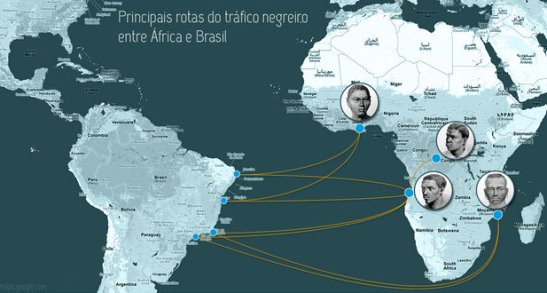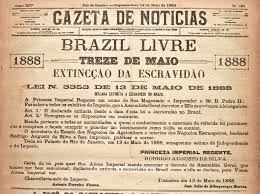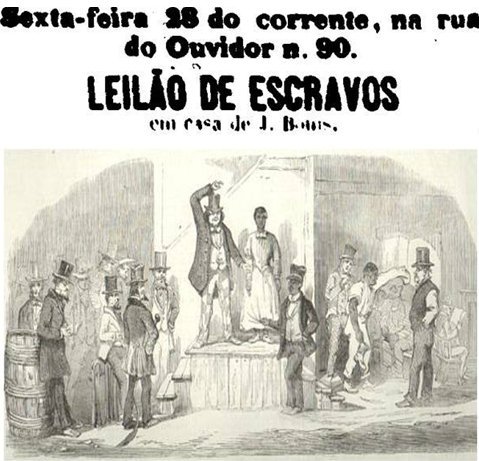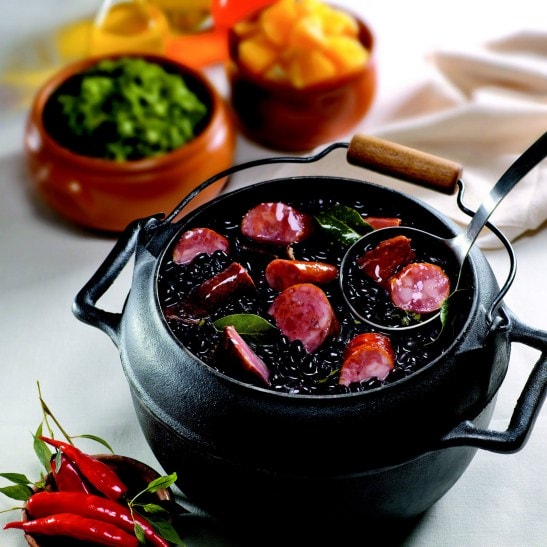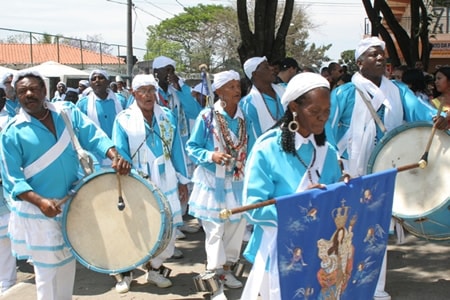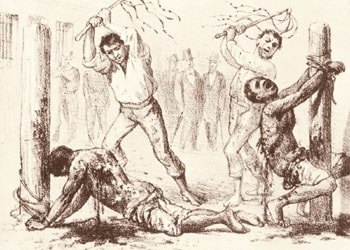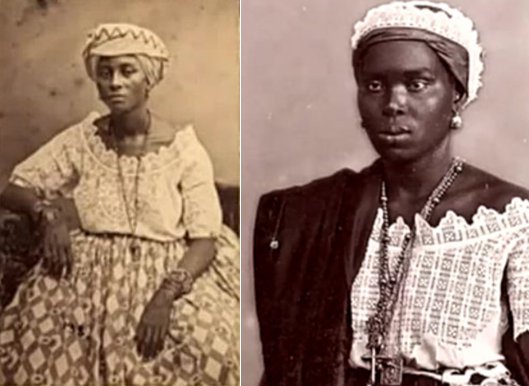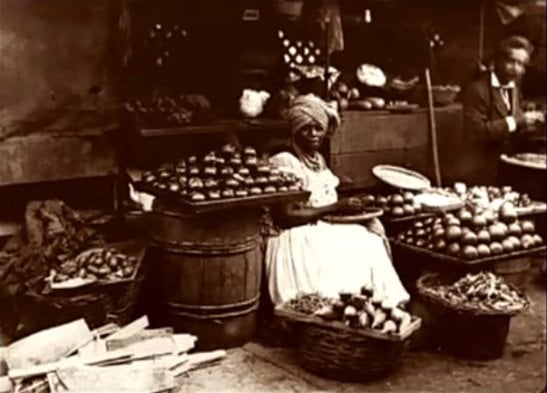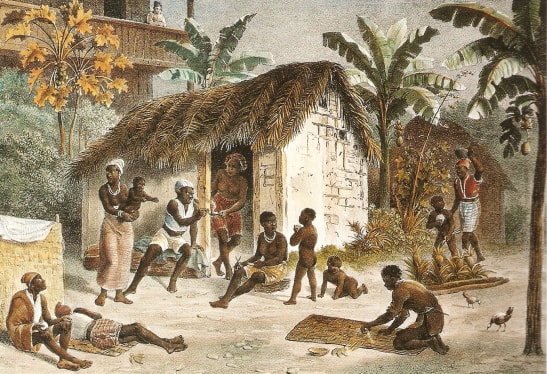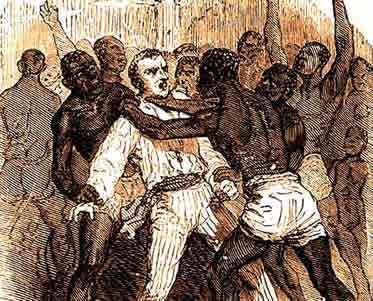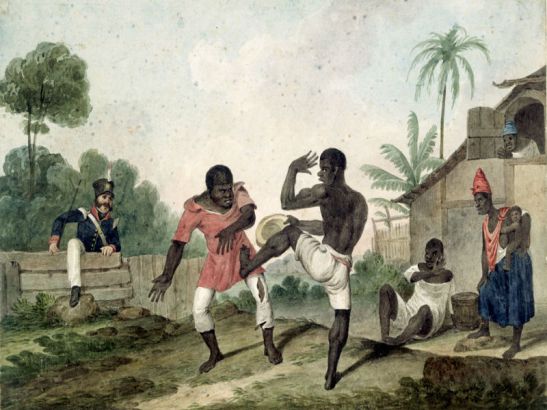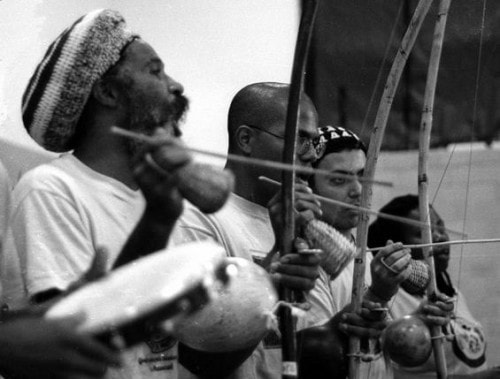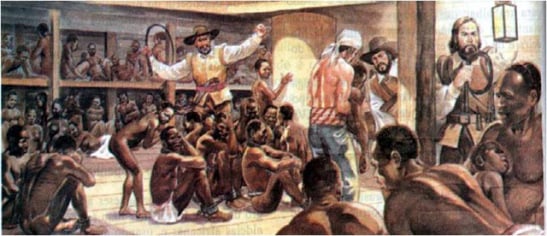
Note from BW of Brazil: Whenever discussing the experiences of African descendants in the Americas, the topic will inevitably turn to the Trans-Atlantic Slave Trade at some point in the discussion. This blog has touched on a few aspects about slavery in Brazil over the past few years, mostly dealing with the sheer numbers of Africans brought to Brazil and the vast racial inequalities that continue even 125 years after the abolition of this institution. Today, in a very intriguing post, we present a little more background about slavery from the Brazilian perspective and shed light on some interesting details.
25 curiosities about slavery in Brazil
by Michel Goulart by Black Women of Brazil
On May 13th the abolition of slavery is commemorated in Brazil. The fact occurred in 1888, through the signing of the famous Lei Áurea (Golden Law), at the hands of Princess Isabel. Since then, this fact has created divisions among those celebrating the liberation of slaves and those who think the Lei Áurea did not include blacks in Brazilian society and maintained inequalities. On this issue, we will discuss in another post. In this post, we will point out 25 curiosities about slavery in Brazil.
Please note: we understand that the matter posted below is delicate and provokes different feelings in different segments of the Brazilian population. The goal is not to idealize the subject or make it a caricature, but just address the facts. We chose also to use the term negro (black), which is more utilized today rather than Afro-Brazilian.
This list was extracted and adapted from different sources such as Mania de História and Guia dos Curiosos.
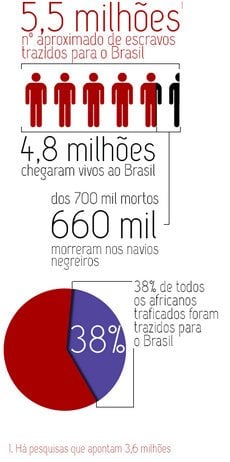
Approximately 5.5 million slaves were brought to Brazil
4.8 million arrived alive
Of the 700,000 that died, 660,000 died on the slave ships
38% of all Africans brought to the Americas during the slave trade went to Brazil
1. The first slave ships were brought by the Portuguese Martim Afonso de Sousa in 1532. The official account estimates that between that date and 1850, something like 5 million black slaves entered Brazil. However, some historians estimate that there could have been twice that number.
2. The slave ships that brought slaves from Africa to Brazil were called “tumbeiros” due to the death of thousands of Africans during the crossing. These deaths were due to abuse suffered by slaves, the poor hygienic conditions and diseases caused by lack of vitamins as in the case of scurvy.
3. It is possible to trace the origin of slaves into three groups: those from modern day Sudan in which the Yoruba, also called nagôs, dominate the region and those who came from the northern tribes of Nigeria, mostly Muslims, called malês or alufás , and the group of the Bantus, captured in the Portuguese colonies of Angola and Mozambique.
4. When arriving in Brazil, African was called the peça (piece) and sold at leilões públicos (public auctions) as a good commodity: they polished their teeth, shaved their hair, applied oils to hide the body diseases and make the skin shine as they were fattened to ensure a good price.

5. A slave was worth more when he was male and adult. A slave was considered an adult when he was between 12 and 30 years of age. They worked on average from 6am to 10pm, almost without rest, and aged very quickly. At 35, they already had white hair and toothless mouths.
6. The captives received, once a day, only a serving of bean broth. To enrich the mixture a bit, they made use of the parts of the pig that the lords despised: the tongue, tail, feet and ears. It was from this practice that came, according to tradition, the Brazilian dish known as feijoada (1).
7. The Festa de Nossa Senhora do Rosário (Feast of Our Lady of the Rosary), the patron saint of slaves in colonial Brazil, was first celebrated in Olinda, Pernambuco (northeastern Brazil) in the year 1645. The saint was already worshiped in Africa, and taken by the Portuguese as a way to Christianize blacks. They were baptized when they left Africa, or when they came to Brazil.
8. Most of all feasts in honor of the saint take place in the city of Serro, Minas Gerais (southeastern Brazil) in July since 1720. According to legend, one day Our Lady of the Rosary came out of the sea. Being called the Indians, they didn’t deal with it. The same happened with white sailors. The saint answered only to slaves, who loudly played their drums.
9. White and black children walked around naked and played until 5 or 6 years of age. They had the same games, based on fantasy characters of African folklore. But at age 7, the black child was faced his/her condition and needed to start working.
10. Each planter was allowed to import 120 slaves per year from Africa. And there was a law that stipulated 50 as the maximum number of lashes that a slave could take a day.
11. The kitchen was very appreciated in the casa grande (big house). Dishes of African origin such as vatapá and caruru, common on the patriarchal table in the northeast, captured European and Brazilian tastes. The kitchen was in an annex of the house, separated from the main rooms by storage or internal rooms.
12. Normally, internal divisions of the slave quarters separated men and women. But, sometimes, some accepted couples were permitted by the master to live in separate shacks, huts covered with banana leaves.
13. On Sundays, the slaves were entitled to cultivate cassava and vegetables for their own consumption. They could even sell the surplus in the city. The measure combated hunger in the field because the monoculture of exportation made no room for subsistence products.
14. When night fell, the sound of drumming and dance moves dominated the slave quarters. Festivals and other cultural events were admitted because most of the masters believed it diminished the chances of revolt.
15. With the expansion of cities, urban slaves multiplied in skilled trades such as bricklayers, chicken vendors, barbers and lace makers. Porters wandered from one side to another, carrying chests, barrels, furniture and, of course, white people.
16. Escravos de ganho (vendor slaves) were slaves who had permission to sell or provide services on the street. In exchange, the slave had to give a percentage of profits to his/her owner.
17. In some regions, African slaves were divided into three categories: the “boçal” , who refused to speak Portuguese, resisting European culture, the “ladino”, who spoke Portuguese, and the “crioulo”, the slave who was born in Brazil. Generally, ladinos and crioulos received better treatment, milder work and prospect of social mobility.
18. Negros never had a passive attitude toward slavery. Many broke working tools and set senzalas (slave quarters) on fire. Others committed suicide, often eating dirt. Still others succumbed to feelings of banzo, great sadness that could lead to death by starvation. A common form of rebellion, however, was escape.
19. According to some historians, capoeira was born of an Angolan ritual called n’golo (zebra dance), a competition that the boys from villages would do to see who would get the girl who reached the age for marriage. Over time, the practice transformed itself into a display of skill and dexterity.
20. The word capoeira (2) is not of African origin. It comes from the Tupi Indian (kapu’era). Brought to Brazil via the slave ships, capoeira was developed in quilombos (3) (maroon societies) of Pernambuco in the sixteenth century. The characteristics of fight and dance acquired in the country can classify it as a genuinely Brazilian cultural manifestation.
21. The berimbau is a percussion instrument brought from Africa (mbirimbau). It only entered into the history of capoeira in the twentieth century. Before, the instrument was used by street vendors to attract customers. The bow comes from the stem of a shrub called biriba, common in the Northeast, which is easy to wear.
22. Until the abolition of slavery, the law punished practitioners of capoeira punishable by up to 300 lashes and the dungeon. From 1889 to 1937, capoeira was a crime under the Penal Code. A simple demonstration resulted in six months in jail. In 1937, President Getúlio Vargas went to see a show, liked it and ended the ban.
23. After independence from Portugal in 1822, one of the first measures of the government was to prohibit black students from attending the same schools as whites. One of these reasons was that they feared they could transmit diseases.
24. The abolitionist movement had existed for more than 60 years when the Lei Áureawas signed in 1888. It mobilized many intellectuals of the time, such as writers, politicians, lawyers, and also the population in general.
25. In 1823, Dom Pedro I drew up a paper advocating the end of slavery in Brazil, but liberation would only occur 65 years later.
Source: História Digital
Notes
1. Feijoada is a stew of beans with beef and pork, which is a typical dish in Portugal and former Portuguese colonies, such as Brazil, Macau, Angola, Mozambique and Goa. Modern variants of the dish are based on ancient Feijoada recipes from the Portuguese regions of Beira, Estremadura, and Trás-os-Montes. In Brazil, feijoada (feijoada brasileira) is often considered the national dish. The name comes from feijão, Portuguese for “beans.” The basic ingredients of feijoada are beans with fresh pork or beef. In northwest Portugal (chiefly Minho and Douro Litoral), it is usually made with white beans; in the northeast (Trás-os-Montes), it is generally prepared with kidney beans, and includes other vegetables such as tomatoes, carrots, and cabbage. The stew is best prepared over low heat in a thick clay pot. It is usually served with rice and assorted sausages, such as chouriço, morcela (blood sausage), farinheira, and others, which may or may not be cooked in the stew. Source
2. Capoeira is a Brazilian martial art that combines elements of dance, acrobatics and music, and is sometimes referred to as a game. It was developed in Brazil mainly by African descendants with native Brazilian influences, probably beginning in the 16th century. It is known by quick and complex moves, using mainly power, speed, and leverage for a wide variety of kicks, spins, and highly mobile techniques; at heart is the ginga, the back-and-forth, foot-to-foot movement that serves as the starting point for such leverage. Capoeira used in genuine self-defense situations incorporates many sweeps and low moves, whereas when played as a game there is more emphasis on high moves, demonstrations of acrobatics, full cartwheels (called au) for evasion, and flips or other exotic techniques by mestres (masters), and performing an entertaining match for the audience. Source
3. A quilombo is a Brazilian hinterland settlement founded by people of African origin including the Quilombolas, or Maroons. Most of the inhabitants of quilombos (called quilombolas) were escaped slaves and, in some cases, later these escaped African slaves would help provide shelter and homes to other minorities of marginalised Portuguese, Brazilian aboriginals, Jews and Arabs, and/or other non-black, non-slave Brazilians who experienced oppression during colonization. However, the documentation on runaway slave communities typically uses the term mocambo to describe the settlements. “Mocambo” is an Ambundu word that means “hideout”, and is typically much smaller than a quilombo. Quilombo was not used until the 1670s and then primarily in more southerly parts of Brazil. A similar settlement exists in other Spanish-speaking countries of Latin America, and is called a palenque. Its inhabitants are palenqueros who speak various Spanish-African-based creole languages. Quilombos are identified as one of three basic forms of active resistance by slaves. The other two are attempts to seize power and armed insurrections for amelioration. Typically, quilombos are a “pre-19th century phenomenon”. The prevalence of the last two increased in the first half of 19th-century Brazil, which was undergoing both political transition and increased slave trade at the time. Source
Leia matéria correspondente em Portugues:
25 curiosidades sobre a escravidão

